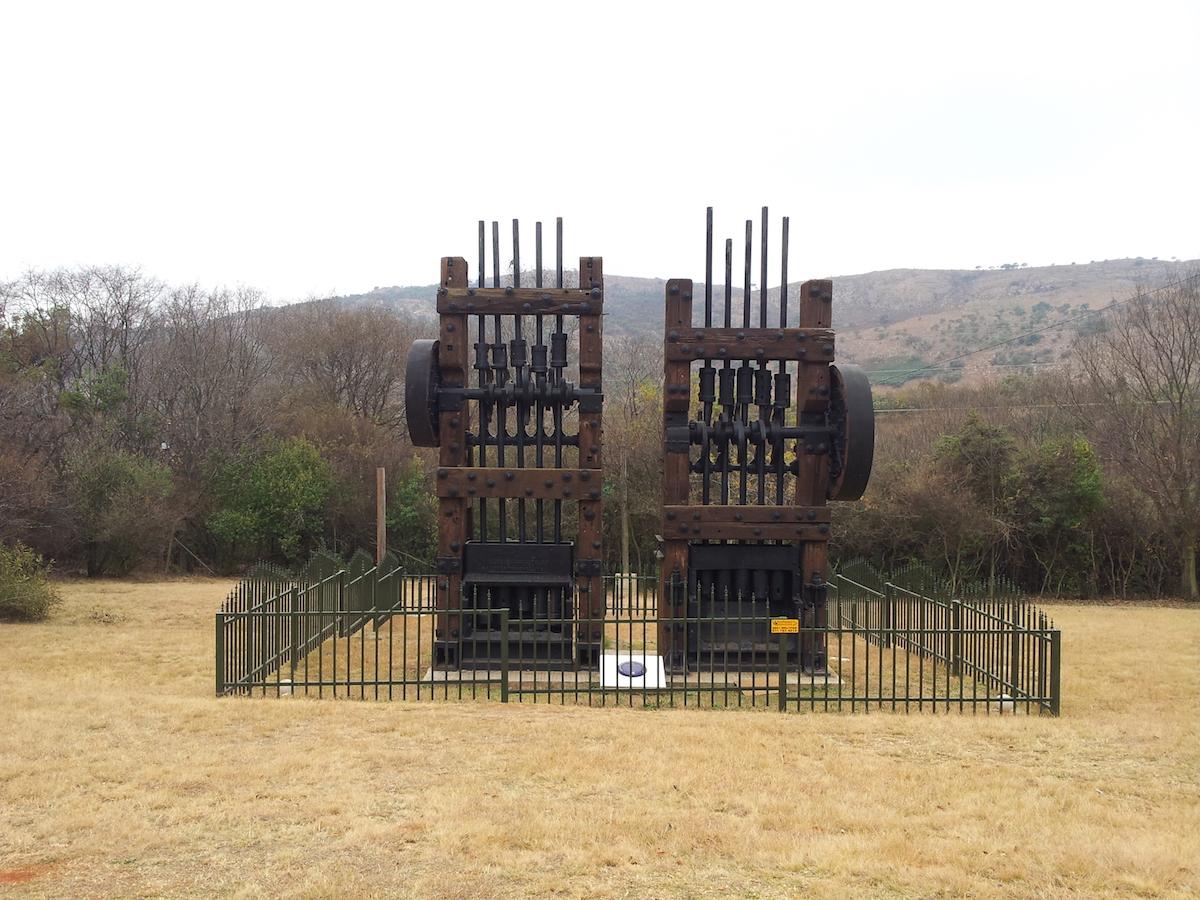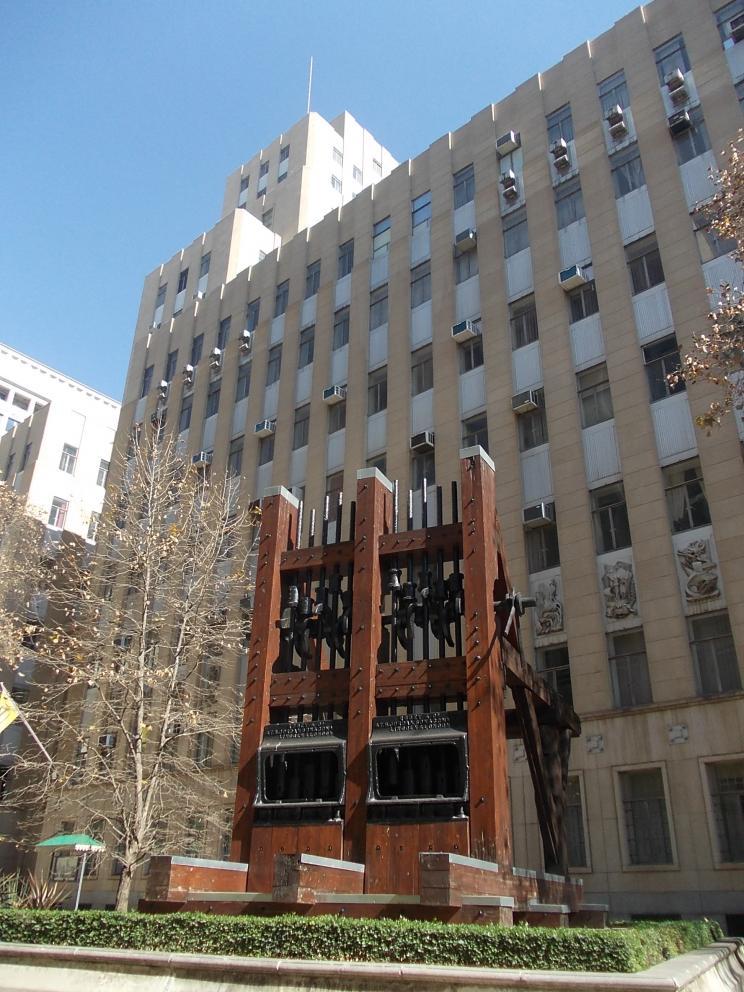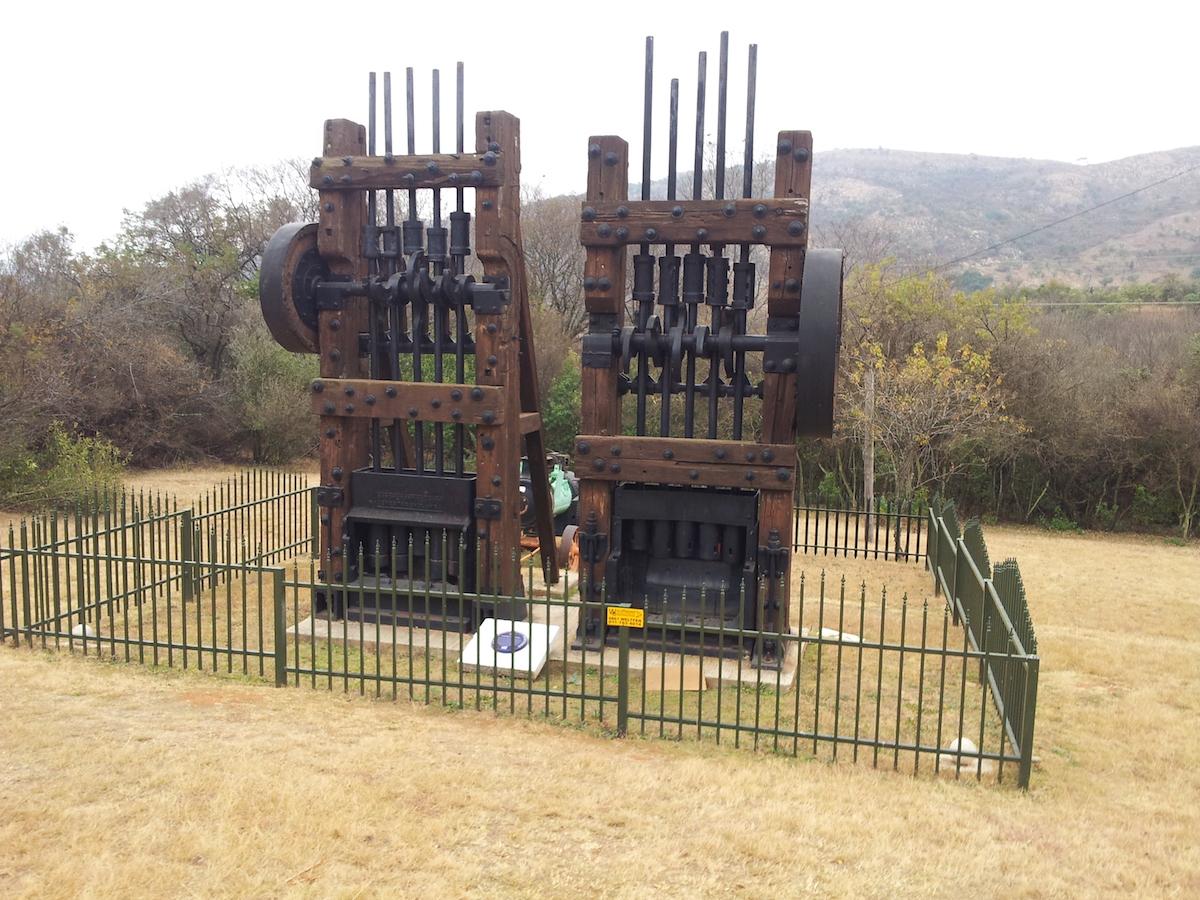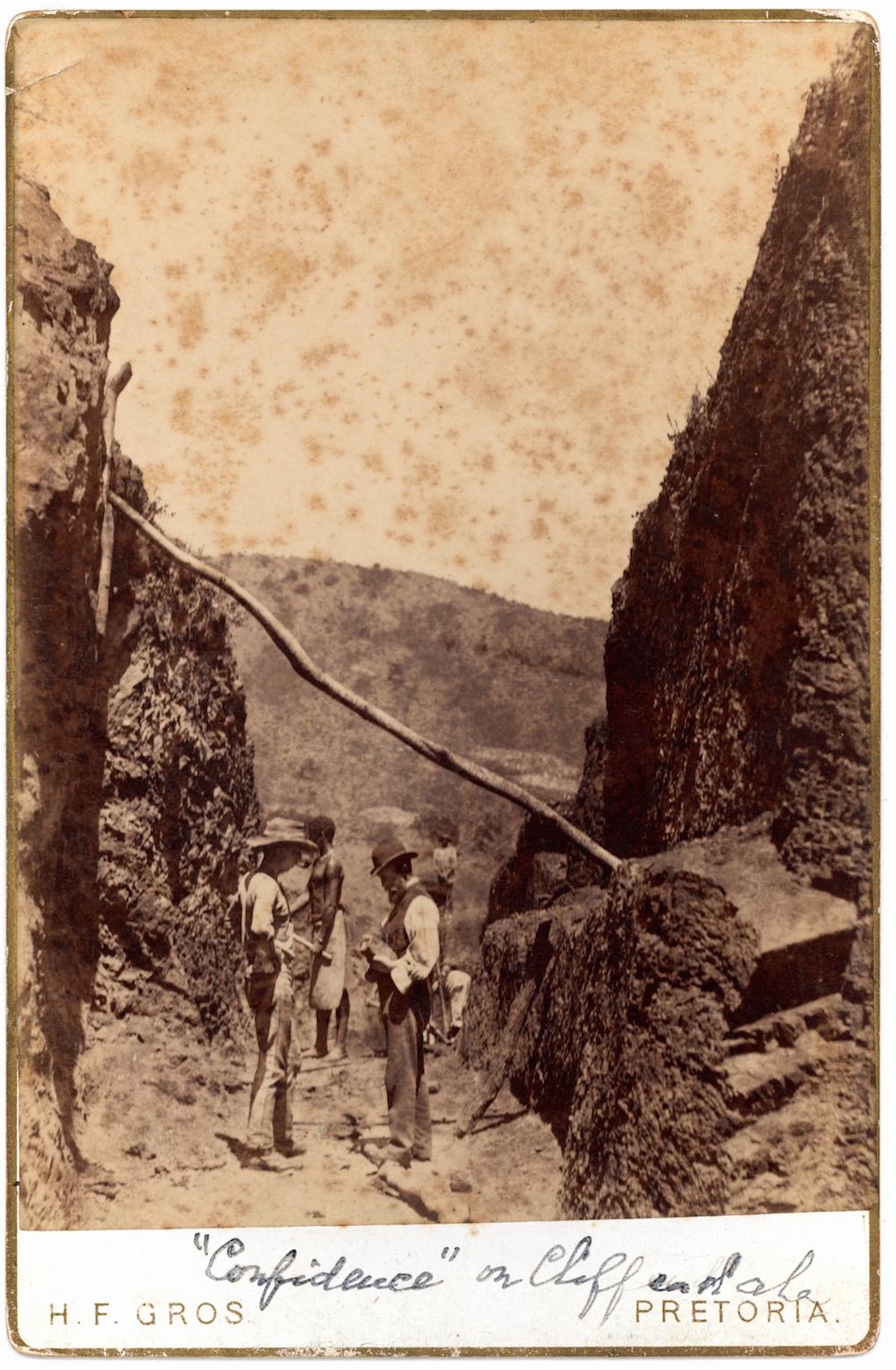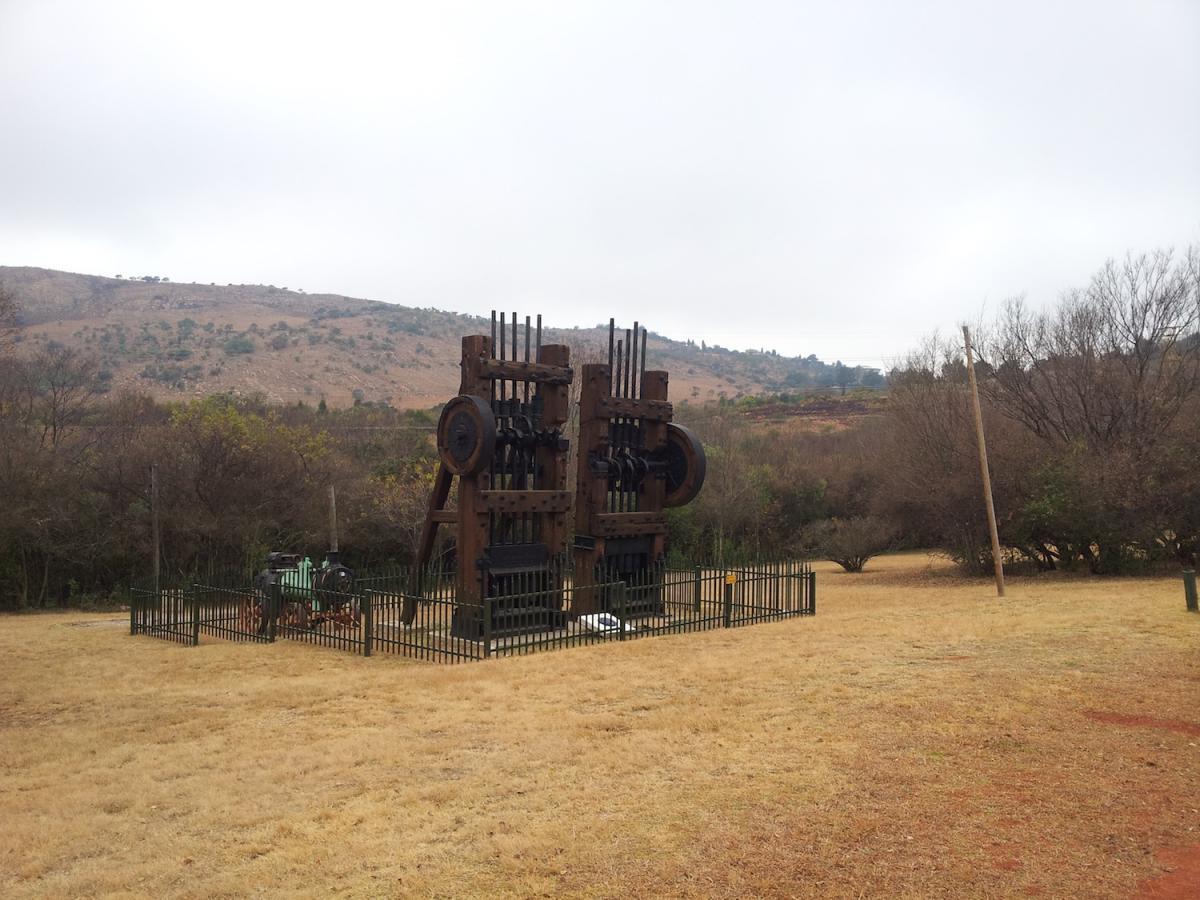
Disclaimer: Any views expressed by individuals and organisations are their own and do not in any way represent the views of The Heritage Portal. If you find any mistakes or historical inaccuracies, please contact the editor.
In the feel good article below, journalist Lucille Davie describes the epic return of Joburg's first stamp mills to the area where they were originally installed in 1885. The article was first published on the City of Joburg's website on 21 May 2009. Click here to view more of Davie's writing.
It always feels good when something is returned to where it originally belonged. So it is with the stamp mills owned by Joburg's first gold prospectors, Fred and Harry Struben.
Last Saturday, the two stamp mills or batteries that the two men used to crush rock in search of gold at their Confidence Reef in Roodepoort, were moved back to the site in the 100ha Kloofendal Nature Reserve. They were the first stamp mills to be used on the Witwatersrand, imported from England and arriving here by ox wagon in 1885, a year after the men found gold in 1884.
The first stamp mills on the Rand (The Heritage Portal)
"We are elated that the stamp mills are back," said Roland Cundill, the chairperson of the Friends of Kloofendal Nature Reserve. He explained that the idea of returning them to the mine workings was raised some two-and-a-half years ago, and approval was given by the mayoral committee in late 2008.
The stamp mills have been on display for some time in Florida, on the corner of Goldman Street and Seventh Avenue. The Strubens positioned the mills on the nearby Wilgespruit stream, about a kilometre from their workings. They were moved some 20 years ago when Christiaan de Wet Road was constructed, as they were in the way of the new road.
The Strubens used the mills to crush raw rock which they dug out of the hillside, the first stage of the process in the search of gold. While George Harrison discovered the main Witwatersrand reef in Langlangte in Joburg in 1886, the main reef in Roodepoort, just south of Florida Lake, was discovered by JG Bantjes.
Another stamp mill has been restored. The Langlaagte Stamp Mill, for many years on display in a small park in Langlaagte, near where Harrison first found gold, was moved to Main Street in 2004.
The mill was brought to the Rand in the 1880s, probably not too long after the Strubens' mill, but was buried in one of the city's many slimes dams in 1912. In 1935 it was recovered, and shortly afterwards ended up in Langlaagte.
Langlaagte Stamp Battery (The Heritage Portal)
Repaired and restored
In 2006, the four-metre-high stamp mills were repaired and restored. But, says Eric Itzkin, the deputy director of immovable heritage in the directorate of arts, culture and heritage, they have not been displayed "to good advantage in their present location, which is out of the tourist route, seldom visited, and some distance removed from the Confidence Reef site where these pieces were originally operated".
At the reserve they will enhance the educational aspect of the site, a fenced area behind which is a series of mineshafts into the side of one of the koppies in the reserve. This area, where the brothers set up a tented camp, was declared a national monument, now a provincial heritage site, in 1983.
The cost of moving and the installation of the stamp mills has been borne by Vanguard Rigging and Shango Solutions. The maintenance of the stamp mills and the mine workings remain the responsibility of the directorate of arts, culture and heritage. Cundill says that a roof over the mills, fencing and paving are still needed at the site, and contributions to these costs would be appreciated.
Another shot of the stamp mills (The Heritage Portal)
Strubens in Pretoria
The Struben brothers were in Pretoria in the 1880s. Harry became a farmer on the outskirts of Pretoria, while Fred roamed around, learning more about geology.
"He was probably the first person to make up his mind that there might be gold on the Witwatersrand," writes historian AP Cartwright in The Gold Miners.
"He began looking for it in 1884 and showed admirable persistence in following up every clue that presented itself." This meant that within a day of any rumour of a possible gold discovery reaching him, he was on the site, studying the ground and wondering about pegging a claim.
Cartwright says that they started prospecting near Kromdraai, on the farms Sterkfontein and Swartkrans. He prospected in the area for seven months, then moved further east, to the Roodepoort site. "On September 18th, 1884 I struck a gneiss vein some four feet thick, showing very rich and in some rock visible gold," said Fred in a report of 1887.
"On finding this my brother and self decided to erect a five-stamp mill to give the reef and this part of the country a good trial which we did, erecting the mill about December, 1885."
Banket rock
Cartwright says Fred Struben should be credited with working out that the banket rock - rock studded with pebbles - was gold-bearing. He was laughed at by his contemporaries, but his hunch "shows beyond doubt that Fred Struben had worked out for himself the correct geological theory and had at least begun to suspect that the banket might be gold-bearing".
But it seems that although the brothers named their mine Confidence Reef, they had overestimated the quantity of gold that they were likely to take from the earth. They later wrote to the government, asking for a reduction "in their concession rental because they were not finding enough gold to make the mine a payable proposition".
Fred and Harry Struben at the Confidence Reef (H F Gros)
Rod Kruger taking a visitor into the old mine workings (Rod Kruger)
Cartwright concludes that they had not stumbled upon the main reef, but were mining quartz instead, where only a small quantity of gold had been laid down.
"The ‘Confidence Reef' was near the outcrop but not of the outcrop and, like everything that had gone before it, a ‘near miss'," records Cartwright.
He says that the sum total of value of the gold recovered from the different sites on the Witwatersrand before 1886, when the main reef was struck, probably did not exceed £10 000.
Lucille Davie has for many years written about Jozi people and places, as well as the city's history and heritage. Take a look at lucilledavie.co.za.
Comments will load below. If for any reason none appear click here for some troubleshooting tips. If you would like to post a comment and need instructions click here.

